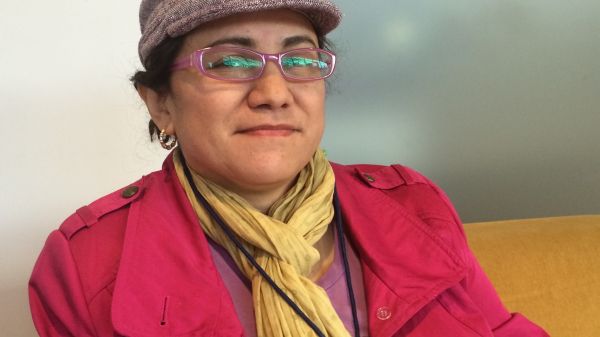An Interview Between Climate Fellows

Elvia Rodriguez Ochoa, Neighborhood Programs Director for Openlands in Chicago, is a multi-disciplinary artist, educator, and administrator, active for over twenty years. Steeped in community based practices, Elvia has helped foster the creative community in Chicago by collaborating with groups as diverse as Polvo Alternative, VillArte, AREA, SouthWest Youth Collaborative, and currently serves on the board at ElevArte Community Studio, Advocates for Urban Agriculture, and NeighborSpace.
Openlands protects the natural and open spaces of northeastern Illinois and the surrounding region to ensure cleaner air and water, protect natural habitats and wildlife, and help balance and enrich our lives. Openlands’ vision for the region is a landscape that includes a vast network of land and water trails, tree-lined streets, and intimate public gardens within easy reach of every city dweller.
Interview with Climate Stories Project Director Jason Davis:
JD: Can you talk about what got you excited about doing environmental work or social justice work?
ER: I came to this work in a roundabout manner. I'm trained as an artist so my first work in the community was based around the arts, and how people can engage with the arts, and nature came along with it. So, you know kind of it sprang from there. I always felt really fortunate that growing up we went to city parks quite a lot, so I've always had access to nature if I didn't think of it that way. So it's something I wanted to make sure that the youth that I was working with also thought about and learned to care about. So from there I did some other work and eventually ended up here as Neighborhood Programs Director at Openlands.
JD: Can you talk about the communities that you work in and who your audiences are?
ER: The focus of the programs which I'm responsible are about supporting community gardens and connecting our different programs in the city to each other. We work in a number of neighborhoods where there is a park deficit and not enough green space in the community. There's a number of gardens that we work with where we're really focused on communities that have been traditionally underserved. Depending on the project we also have other considerations such as flooding: Is this an area that area that needs some support in reducing the amount of flooding? Is this an area that needs green space but is an area that has not been invested in by the city? And one of the things that I've really pushed in coming into the organization is reaching out in multiple languages, so my first push was translating some of our work into Spanish.
JD: Can you talk more about some projects you’re working on?
ER: I’m focused on creating additional green space in a community called Chicago Lawn, where we had just created a new school campus in partnership with the Healthy Schools Campaign and Space to Grow Programs. We completely transformed the school campus, adding new playgrounds, and new native plant and food gardens. We also did storm water capturing, helping to reduce the amount of flooding that could happen in the neighborhood. My idea was try to build a community garden nearby that would connect to what we were doing at the school. It didn't work out the way I thought, in part because there was not really a good location close to the school where we could do a garden. But we did reach out to some of the organizations that partner with the school and are near that area. There's a possibility of working with a group called Intercity Muslim Action Network to create community gardens in the backyards of some of foreclosed buildings that are now being rehabbed to provide housing for formerly incarcerated people coming back to the neighborhood. It took a twist that I wasn't expecting and it will probably take a little bit longer than I expected to make this come into fruition.
We also hold workshops which explain the benefits of storm water management for a community or school, and we also encourage and teach people to plant native gardens. The more popular of the two workshops has been the rain barrel workshop. People receive rain barrels free of charge through this program, and we're supporting that by making sure that people get connected to that resource. And then we do some follow-up to make sure that the rain barrel or the garden are installed so that it's not just these materials are being handed out, but they're actually being put into place and benefitting the community.
JD: What is most rewarding about your work?
ER: What's really interesting is the change in how people understand what's going on by the time they're done with our workshops. Often times they'll come into the workshop knowing that they can sign up for a rain barrel or get native plants but they won't necessarily know how that benefits the neighborhood or how that benefits themselves. And so by the end of the workshop, they're like “this is great, I never knew that I could do this and that it would make a difference.” Or there are other people who say "this is what we used to do at home." A lot of the communities are immigrant communities, and they'll say "back in my town in Mexico we used to collect rain all the time.” They're excited to be able to do the same thing in the city - that they're able to reconnect with that idea of harnessing natural resources in a way that's not harmful to the environment.


